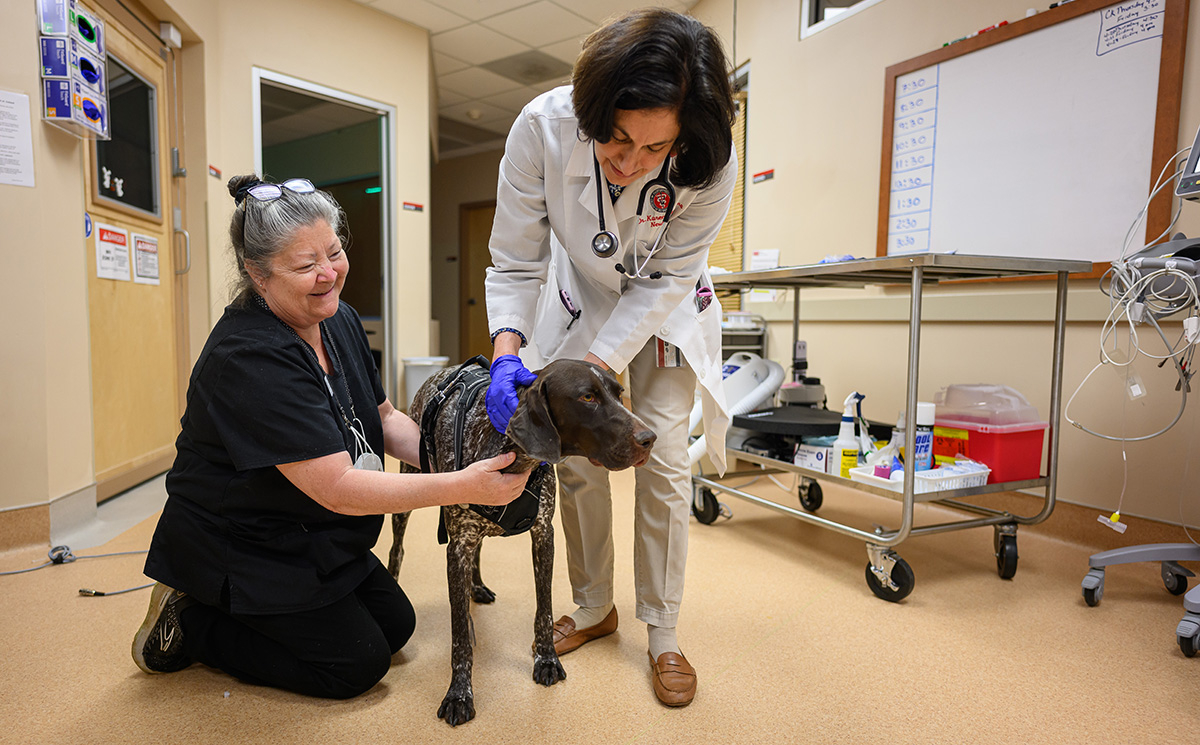NC State is hosting the national kickoff of a bold new effort to help school districts make the most of digital learning. The Future Ready Summit Feb. 11-12 at the Friday Institute is helping school districts in North Carolina, South Carolina and Virginia create their own digital learning plans. NC State is partnering with the the Alliance for Excellent Education, the White House and the U.S. Department of Education on 12 summits across the nation this spring.
Mary Ann Wolf, director of digital learning programs at the Friday Institute, will moderate several of the summits. She took time to explain digital learning technology’s potential for students.
- Why is this a critical time to focus on digital learning?
Digital learning has the potential to increase opportunities to meet the needs of each student.
Schools can accelerate the transition to digital learning by taking advantage of growing access to the Internet and technology, using data and content systems that identify and make recommendations for what students need, and choosing instructional strategies that take advantage of the digital content, tools and resources. Here’s why this digital learning transition is critical.
- Engaging and effective approach: The way students learn is changing and schools need to adapt. Studies have shown that students are more engaged when they use technology. If the technology use is purposefully designed, this can lead to increases in achievement.
- Equity: Across the nation, the achievement gap is widening and will continue to grow as some have access to the opportunities technology offers and others do not. Bringing digital learning to all schools can help level that playing field.
- Personalization: We know more about how students learn than ever before. Technology and digital learning allow teachers to get more information about their learners and use that information more efficiently than ever before.
- College and career readiness now includes digital citizenship. We have to teach students how to responsibly use their devices and the Internet. Additionally, students need to be ready to collaborate, think critically, be creative and communicate in a wide range of contexts. Digital learning and interacting with people around the globe increases those competencies.
- Why was NC State chosen to host the first of the Future Ready Summit sessions?
The Friday Institute at NC State was chosen because of its commitment to innovation in education, its experience in leading digital learning initiatives, like the NC Digital Learning Plan and the Digital Learning Transition MOOC-Ed, and its expertise in designing and implementing professional learning opportunities. The Friday Institute is a Future Ready coalition partner and has been integral in developing content for the summits. Nancy Mangum and I from the Friday Institute will be moderating several of the summits, and the Friday Institute developed and will lead the Professional Learning strand. Our colleagues Lauren Acree, Abbey Futrell and Mark Samberg will facilitate professional learning sessions at the summits.
- Describe the Future Ready Summit’s purpose.
The Future Ready Summit is designed to provide school district teams, which include superintendents, with the opportunity to understand where they are in the digital learning transition, learn about strategies and action steps that will support their efforts to become Future Ready, collaborate with experts and other districts to further their work and have dedicated team time.
Each team is bringing a Future Ready self-assessment that they took prior to the summit, and they will have a chance to further their knowledge and develop an action plan for the digital learning transition. They should leave with specific steps to continue the work. More information on the summit is online.
- Bring us up to date on efforts to improve digital learning in North Carolina schools.
North Carolina is well positioned to continue to be a leader in the transition to digital learning. The Friday Institute is in the process of developing the NC Digital Learning Plan. This is a comprehensive effort to understand the assets and needs in digital learning across the state, involves extensive research and stakeholder input, and includes site visits to 16 districts and several charter schools across the state.
We’re building on previous work in North Carolina. Here’s an excerpt from the first Digital Learning Plan Policy Brief: “This transition has already begun in North Carolina at the state, district, and school levels. The School Connectivity and K-12 Cloud Computing initiatives place North Carolina at the national forefront in providing the robust broadband access and related software and services that are foundational to the transition. The North Carolina Virtual Public School has expanded curriculum offerings through virtual learning for students throughout the state. The Home Base system will continue to provide teachers, students, parents and administrators with real-time access to student data and teaching and learning resources. Many of the state’s educators have already gained firsthand experience as digital-age learners in virtual and blended professional development programs. Most importantly, districts and schools throughout the state are deeply engaged in innovative local digital learning initiatives — including Mooresville Graded School District, which has become a national model. The challenge moving forward is to pull these important initiatives together into a coherent long-term strategy that sets directions, supports innovation, provides resources, and removes barriers, so that the State’s educators and students will benefit fully from digital content and tools.”
- What are the biggest challenges schools face related to digital learning?
Although districts and schools are making progress in the digital learning transition, they face many challenges. The key in this transition is that the digital learning strives for a transformation to student-centered, personalized learning to meet the needs of each student. The emphasis is on the learning, rather than just digital. Districts have to ensure that administrators and educators have the capacity to implement digital learning, as it is a continuously evolving area. This requires ongoing, job-embedded professional learning opportunities to provide them with the tools and resources they need. Another struggle for districts is adequate access to devices and Internet, especially at home. Districts are also working to transition to digital content, which raises many questions about open education resources, teacher created materials and subscriptions, rather than traditional textbooks. Lastly, funding also emerges as a consistent challenge. This transition often includes several initial costs, as well as ongoing expenses that need to be planned for in order to ensure the support and resources needed for the digital learning transition.
- Categories:



